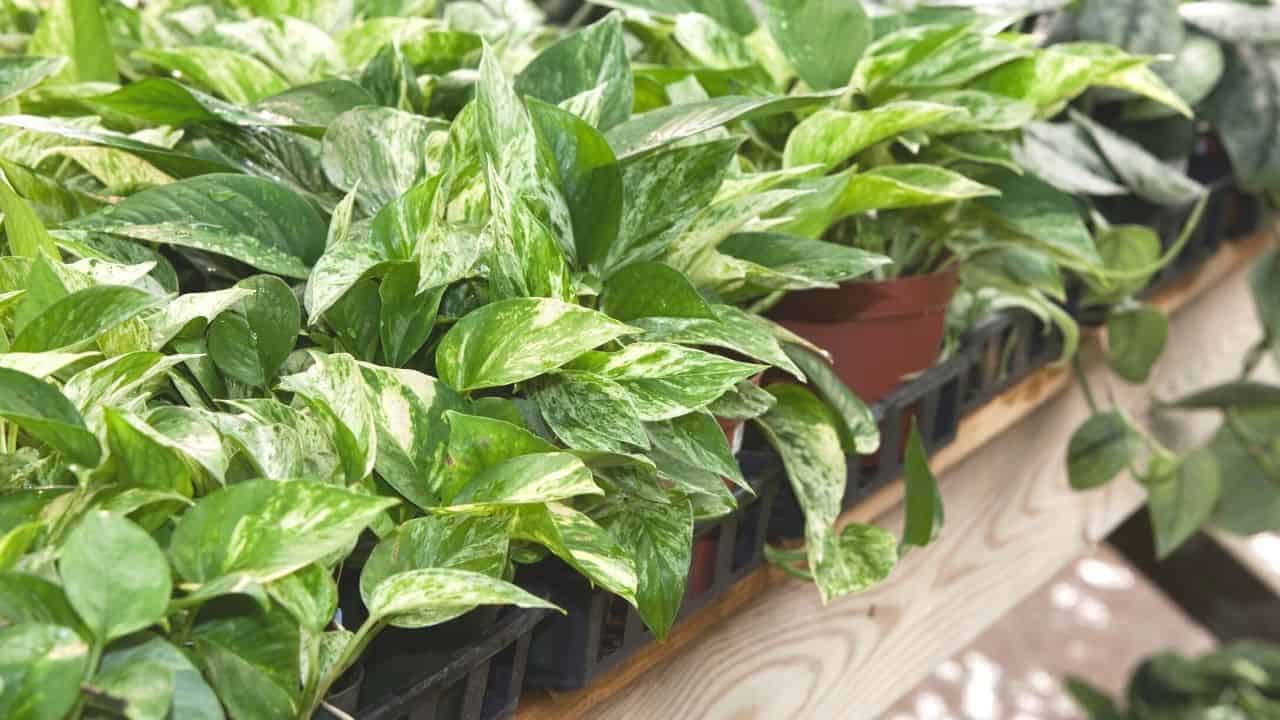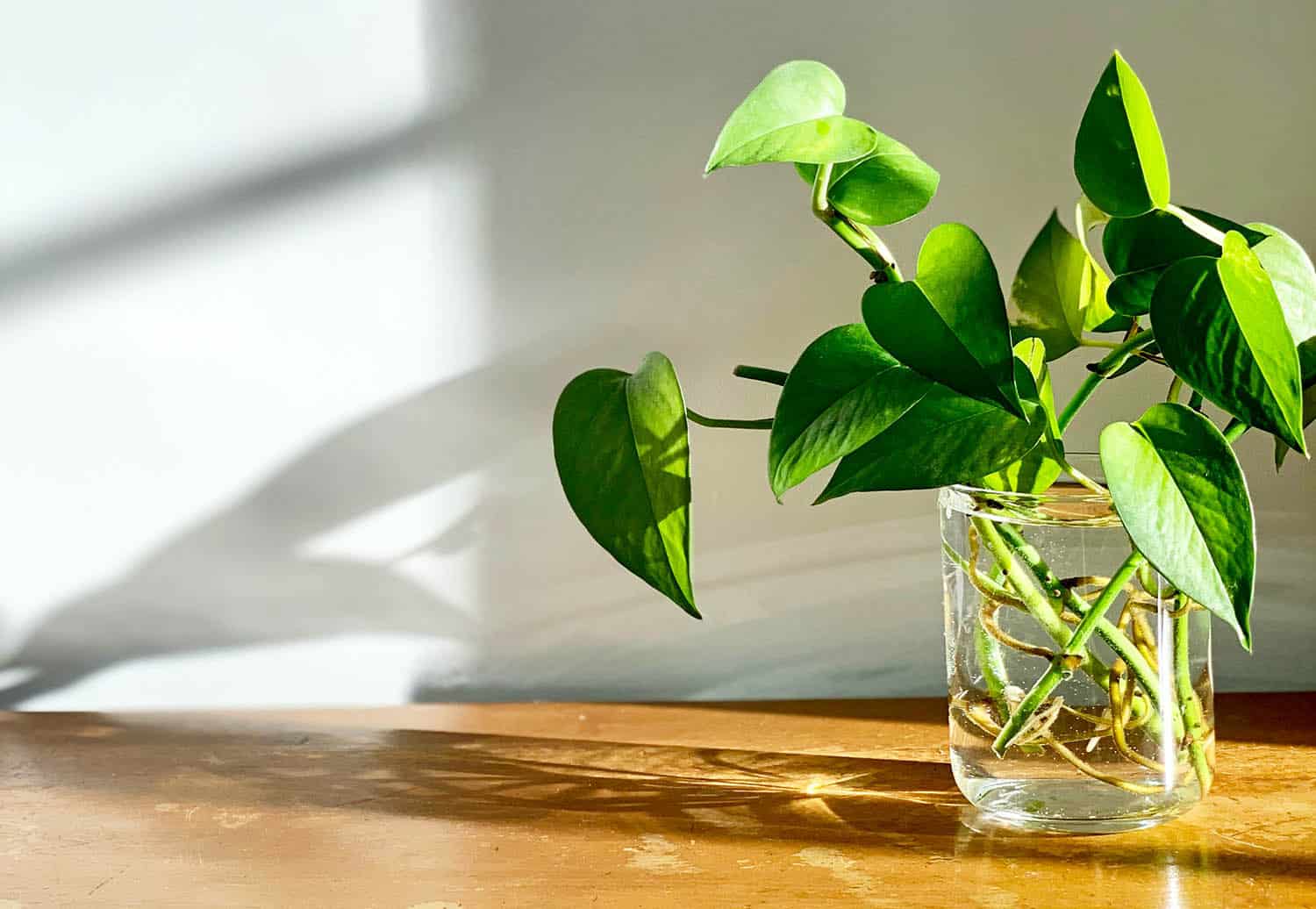Pothos houseplants make a stunning statement in any living space with their long vine-like leaves and fast growth rate when provided the appropriate growing conditions such as stable temperature, bright indirect lighting, high air humidity levels, and regular watering.
These plants need a balanced fertilizer to accelerate their growth. Furthermore, optimal growth occurs when environmental conditions closely resemble tropical habitats.
Temperature
Pothos plants are tropical rainforest-dwellers that prefer warm and moist conditions; however, they can tolerate wider temperature ranges and lower humidity levels as long as their other needs are consistently met.
Winter temperatures make it all the more vital that you monitor the temperature around your plant, especially if temperatures fall below freezing. When this occurs, cells within leaves and stems begin to die off resulting in noticeable leaf yellowing as well as root system rot and loss.
Low temperatures reduce moisture in the air, which can lead to dehydration of leaf margins and consequent dehydration of foliage. Droopy foliage is often the first sign of dehydration; however it could also be the result of other environmental stresses. If your plants are growing in shade but you notice sudden variations in leaf color or variegation it could indicate that they don’t receive enough light – relocate them or provide stronger light sources so they return to normal quickly.
Protection from direct sunlight during the day is also key when caring for Pothos plants, since too much exposure can burn their leaves, leading to irregular bleached or brown dead spots on them. If this occurs, move the plants to a shaded location or use a trellis so they do not come into direct sunlight.
Temperature stress often manifests itself through slowing growth rate. Pothos plants grow quickly during spring and summer, so keeping their environment warm and humid is crucial to their optimal development. Keep a thermometer nearby your plants to monitor the temperature; if it drops below 60F, relocate your pothos plants away from windows where cold air tends to collect.
Light
As with any houseplant, light levels have an enormous influence on a pothos’ rate of growth. Sunlight helps produce chlorophyll – essential to photosynthesis – which gives energy back into a plant through photosynthesis. Pothos prefer bright indirect sunlight but are adaptable enough to tolerate low-light environments as long as there is some natural lighting nearby – ideal locations include near windows or other sources of bright illumination rather than direct sunlight which could cause them to burn quickly.
An important element that influences how quickly pothos plants flourish is the soil they are planted in. To maximize growth, choose loose and well-draining potting soil that allows the roots to receive constant access to moisture without overwatering or becoming waterlogged; otherwise, overwatering could result in limp leaves and possible root rot. For best results, set up a watering schedule as well as regularly checking moisture levels within your pothos plants’ potted environment.
As for soil nutrition, its availability plays a huge role in how quickly pothos grows. When planting it in containers or pots, using a specially formulated nutrient solution for plants such as pothos should provide it with all of the essential vitamins it requires for its health and survival. Plants grown in water should also receive appropriate amounts of nourishment as this medium does not contain as much carbon dioxide than soil does.
To maximize the speed at which your pothos grows, feeding it with fertilizer on a regular basis may help. Doing this will ensure its cells receive essential nutrients to facilitate its rapid expansion.
Pothos plants are easily propagated, so if you want to add this beautiful addition to your collection, learning how to take cuttings from existing vines and grow them yourself could quickly transform your living room into a lush green jungle! Just follow these simple instructions, and soon enough!

Water
Pothos plants require more than just ideal temperatures and light conditions to thrive; they also require the correct amount of water. Too little can result in limp, wilted leaves and stunted growth while too much causes root rot that threatens their lives; an efficient watering schedule can help avoid this happening.
Rooting pothos takes 7-14 days in water, though most people won’t witness roots forming until 3 weeks have passed. To speed this process along, dip the cut end of each stem you harvest after cutting from its parent plant in rooting hormone; it is not required before placing into dechlorinated water but will reduce time needed for new roots to form.
Water should be changed regularly to prevent algae build-up and avoid overwatering the plant. Furthermore, liquid fertilizer should be added every 2-3 weeks for added nutrients that support its health.
Some varieties of pothos grow more quickly than others. Variegated leaves often grow slower because they don’t photosynthesize as efficiently, however.
Pests and disease can also hinder a pothos’s rate of growth. Aphids, spider mites, and scale insects all pose threats that could hinder or even stop its progress; should any issues appear on your plant make sure to treat it quickly!
To reduce pest problems with pothos plants, it’s wise to place them in a large container with several drainage holes and frequently rotate it so it receives equal light from all directions. Rotation helps avoid leggy or overgrown growth caused by direct light sources; additionally if using an automatic mister to water your pothos plant make sure that its solution does not contain chlorine, as chlorine damage to leaves could occur over time.
Fertilizer
Pothos plants flourish when fed regularly. A balanced fertilizer designed specifically for houseplants should be added to their watering regimen to promote rapid growth. Feeding it every 2-3 months during its growing season should maximize growth rates and help form bushy plant forms.
Chlorophyll levels also influence how quickly plants grow; Devil’s Ivy varieties with greener leaves generally produce more chlorophyll and thus tend to expand more quickly than their less colorful counterparts. Regular pruning of pothos plants is another way to accelerate its rate of expansion; long stems restricting sunlight absorption can hinder its development; to do this effectively use sharp scissors or clean knife and place cut pieces in nonporous, watertight container such as an old glass or jelly jar for easy storage and replacement with fresh water every two or three weeks to prevent build-up of algae which causes root rot.
Growing pothos in water may be more efficient than planting it directly into soil, particularly when starting from cuttings. Pothos will typically take root within about a month when propagated this way compared to seeds; and for even quicker rooting growth use diluted rooting hormone.
Pothos plants thrive when planted in soil as opposed to water, with rooting occurring more quickly as well as additional benefits such as adding nutrient-rich potting mix to their growing medium and water that drains properly preventing root rot while keeping soil moist without overwatering it. However, Pothos tends to slow their growth rate during the winter season when temperatures drop significantly; during this period they may look limp or wilted but will soon return back quickly come spring time. For optimal results fertilize your pothos early spring through summer to ensure optimal growth! For best results fertilize your pothos throughout both spring and summer if possible for best results!

